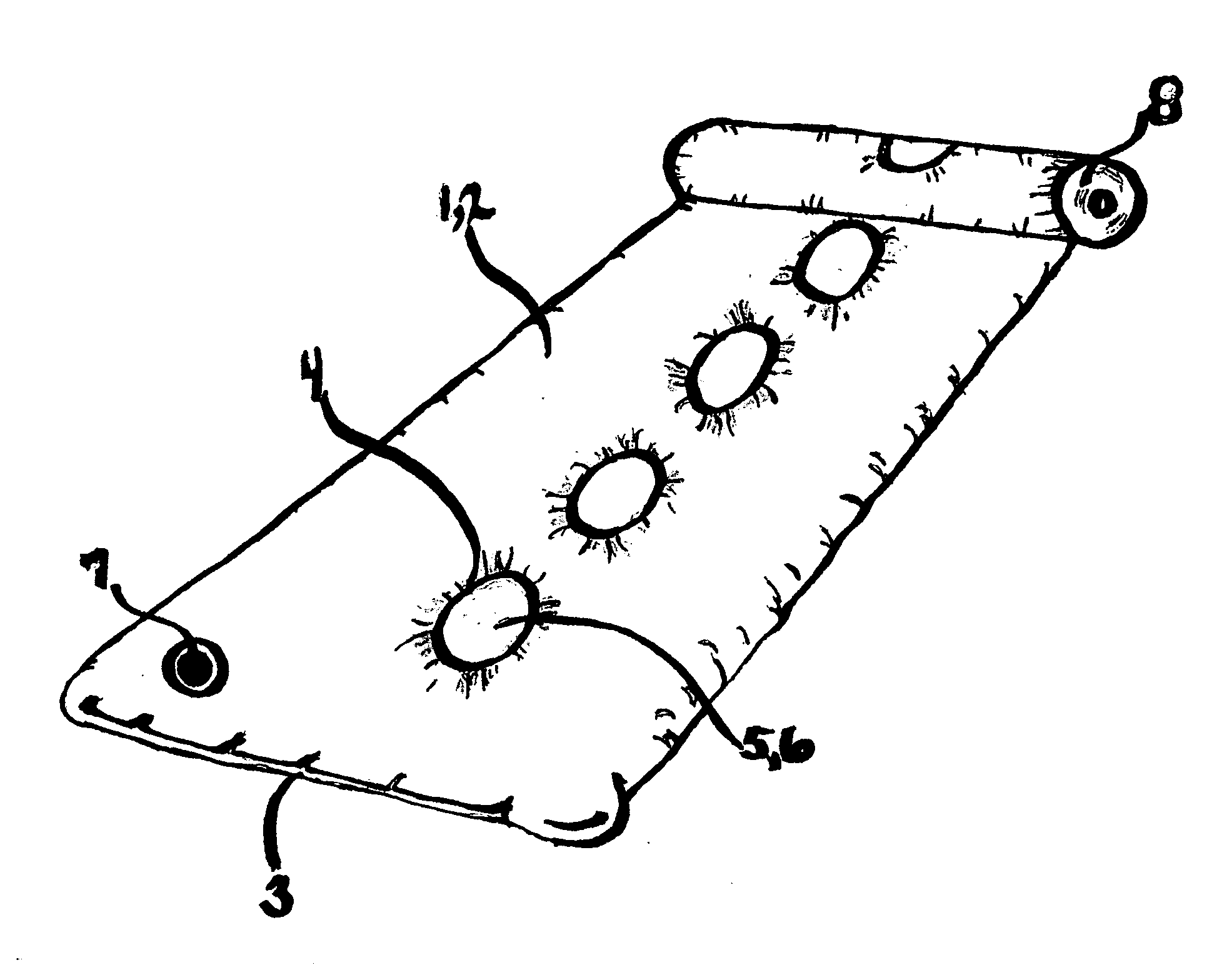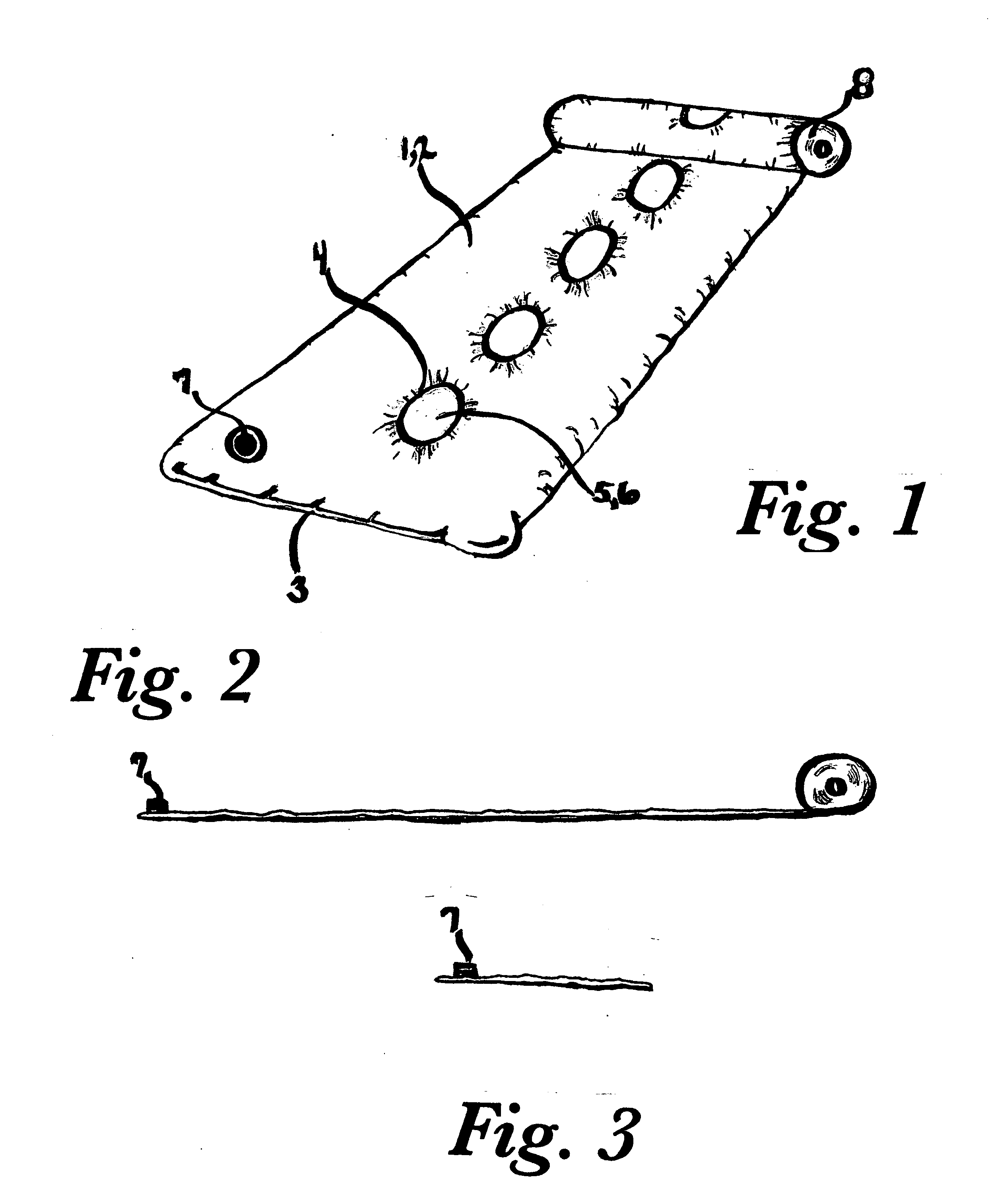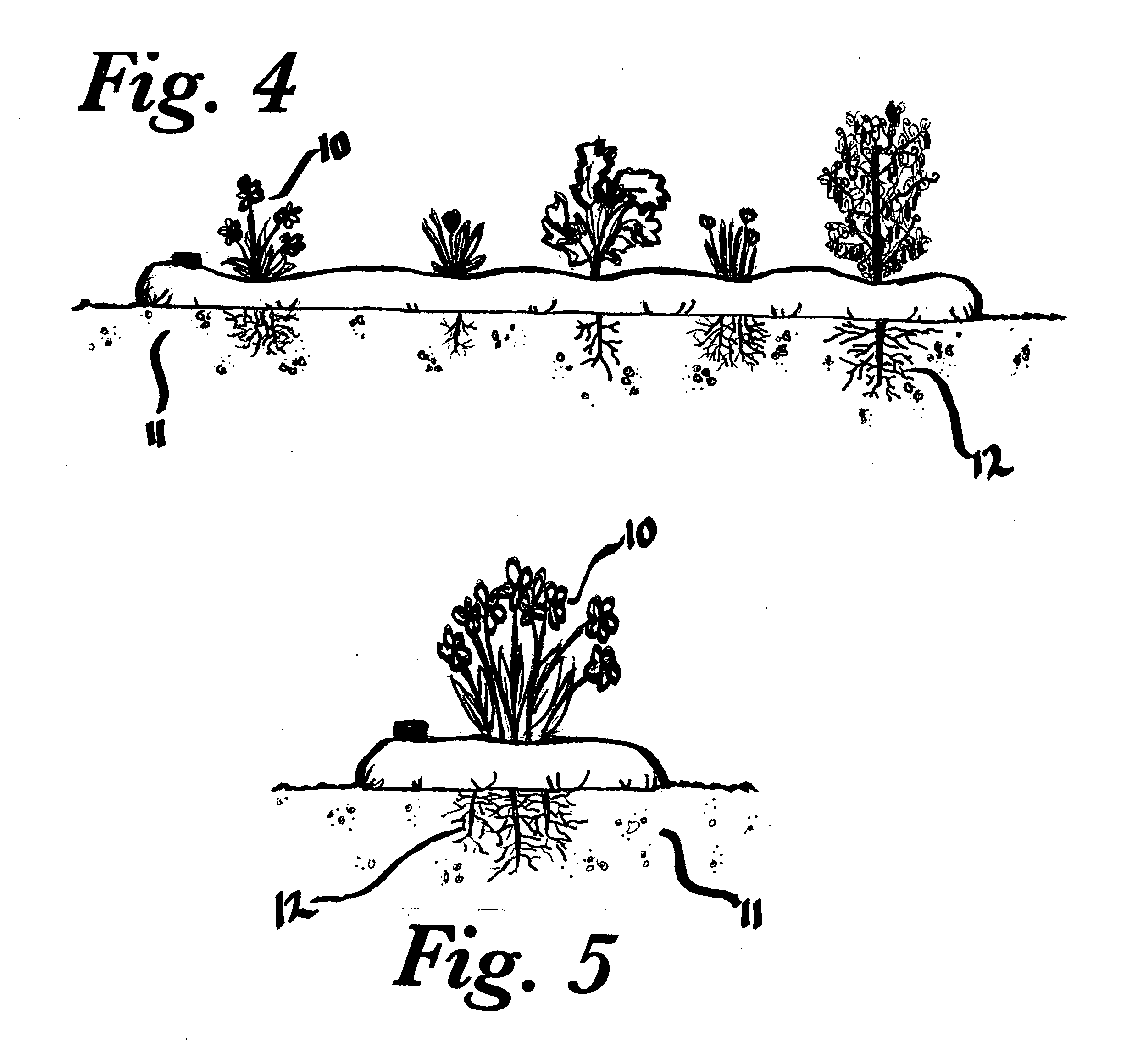Garden waterbed
a technology for waterbeds and plants, applied in the field of garden waterbeds, can solve the problems of high dislocation, add obstructions to the environment where laborers are working, and still dislodge objects from the outer edges, so as to maximize the productivity of each individual plant, increase yield, and add to the end cost of plants/crops
- Summary
- Abstract
- Description
- Claims
- Application Information
AI Technical Summary
Benefits of technology
Problems solved by technology
Method used
Image
Examples
Embodiment Construction
[0032]The basic idea of the thermally protective weed barrier in protecting plants enclosed by the barrier is to prevent competitive plant growth and increase temperatures surrounding the plants. Maximum thermal protection will be reached by filling the device to maximum capacity. The increased mass increases the potential thermal energy. This may prove to be beneficial in early spring or late fall, during periods of colder weather or when frost is eminent. However, maximum thermal protection may not be need during periods of warm weather. Since the amount of thermal energy is dependent upon the amount of fluid contained in the apparatus, the valve can be opened and fluid drained out to reach the desired amount of protection needed. The varying amount of thermal protection does not impact the viability of weed suppression.
[0033]Referring to the drawings, a first embodiment of the invention is shown in FIG. 1, showing a self-supporting, thermally protective weed barrier, being genera...
PUM
 Login to View More
Login to View More Abstract
Description
Claims
Application Information
 Login to View More
Login to View More - R&D
- Intellectual Property
- Life Sciences
- Materials
- Tech Scout
- Unparalleled Data Quality
- Higher Quality Content
- 60% Fewer Hallucinations
Browse by: Latest US Patents, China's latest patents, Technical Efficacy Thesaurus, Application Domain, Technology Topic, Popular Technical Reports.
© 2025 PatSnap. All rights reserved.Legal|Privacy policy|Modern Slavery Act Transparency Statement|Sitemap|About US| Contact US: help@patsnap.com



